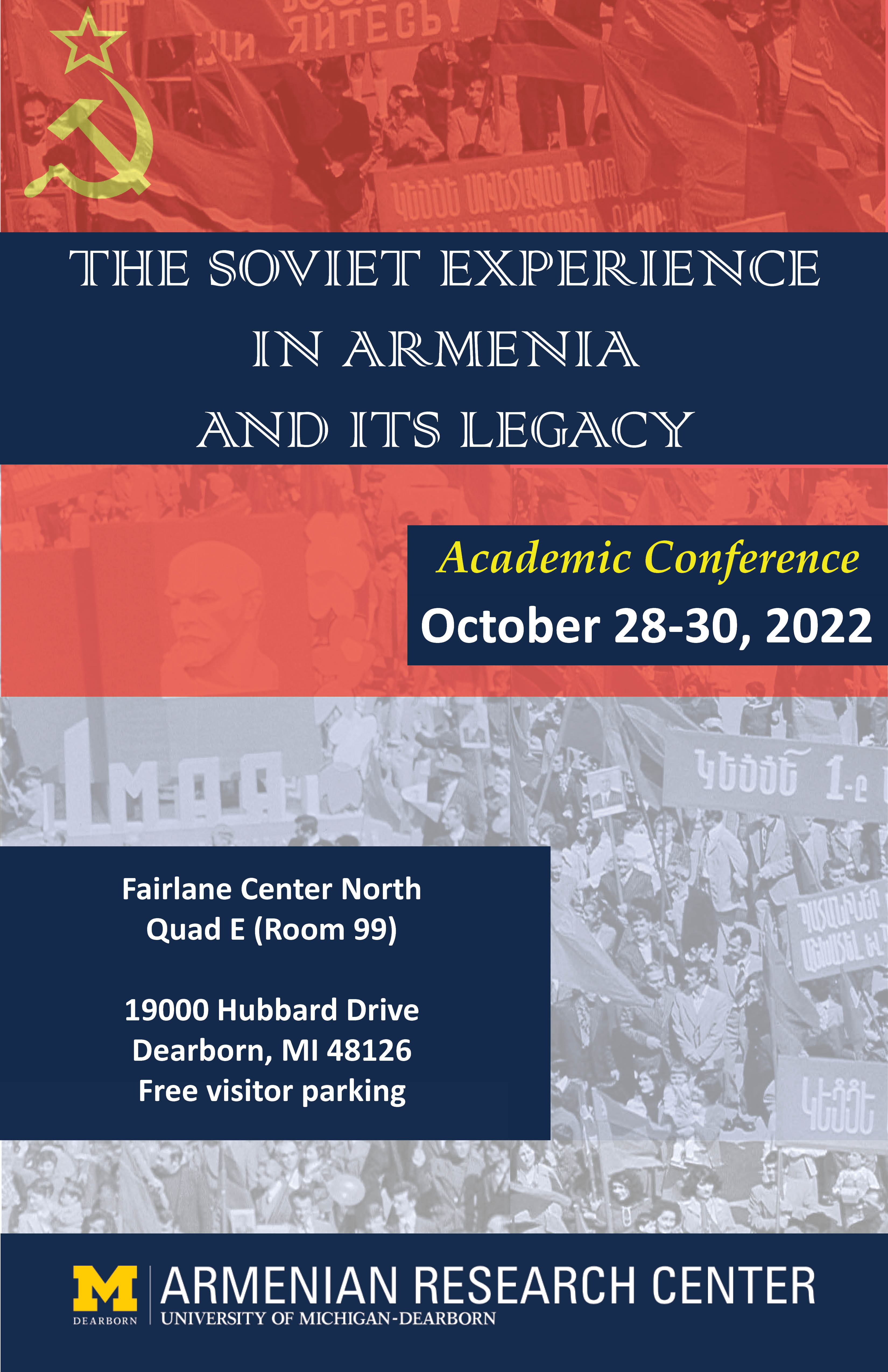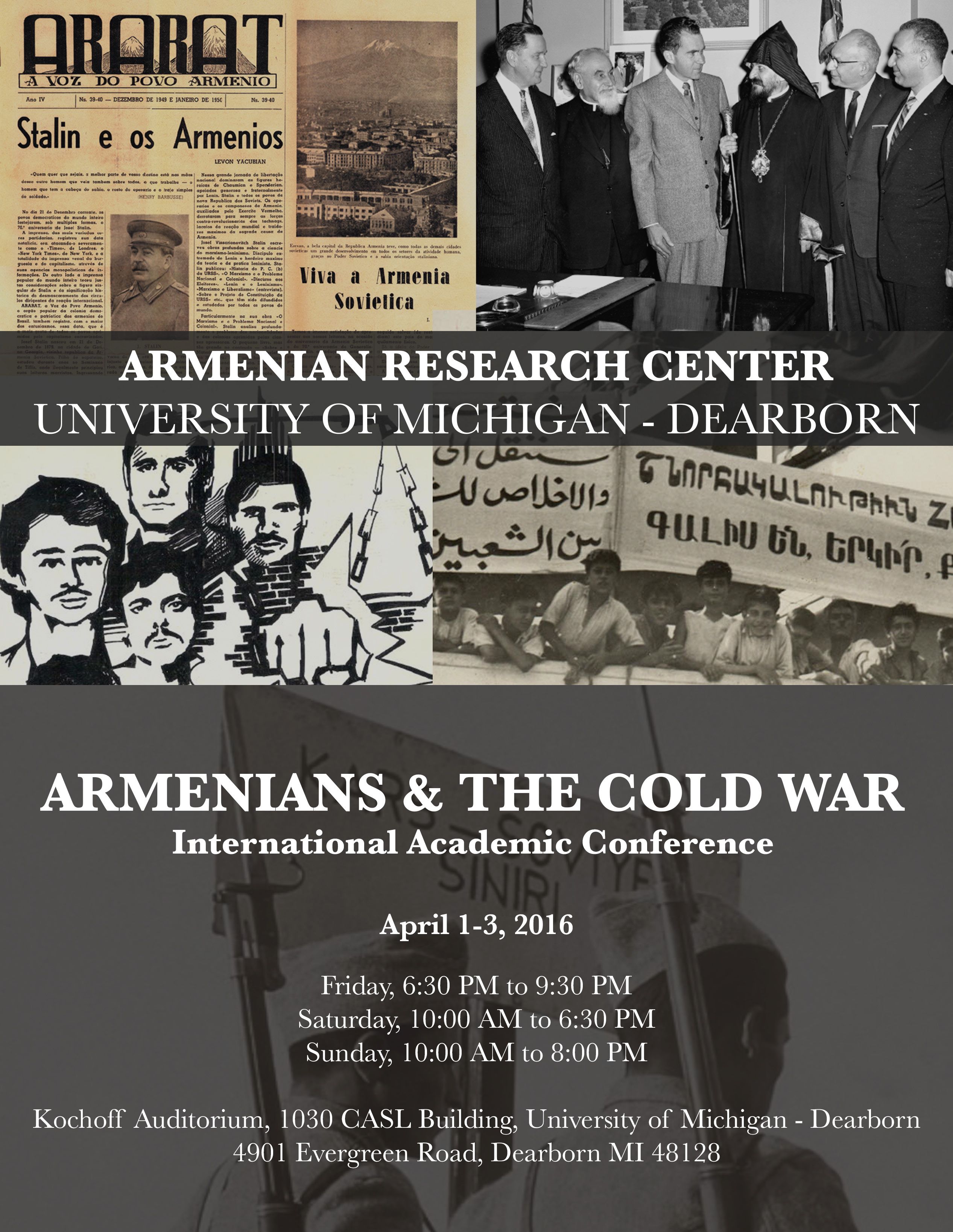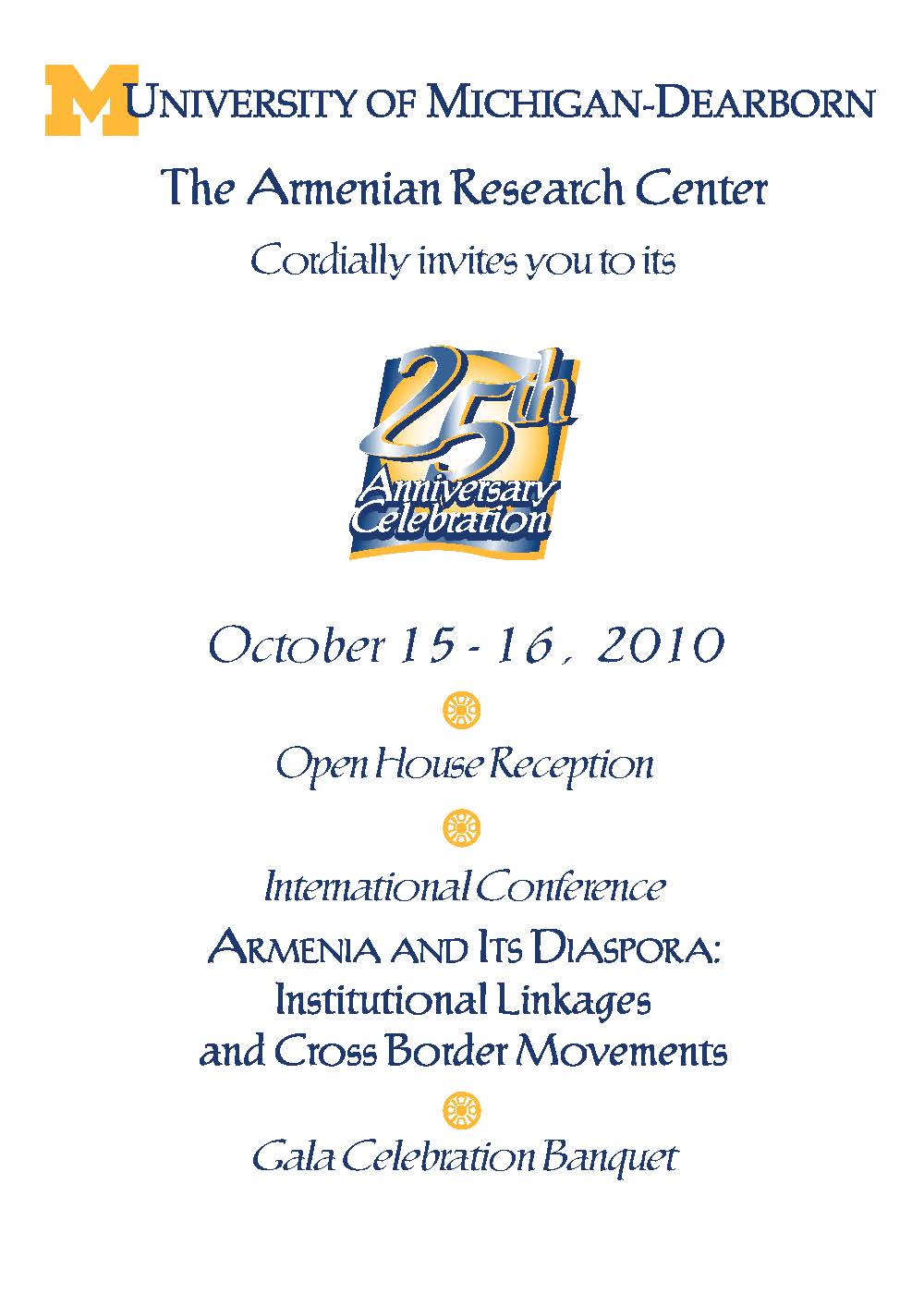Conferences
"The Soviet Experience in Armenia and Its Legacy" International Conference, October 28-30, 2022

After a long delay due to the COVID-19 pandemic, the ARC’s postponed multidisciplinary international academic conference on “The Soviet Experience in Armenia and Its Legacy” was held on October 28-30, 2022.
The conference sought to analyze the impact of seventy years of Soviet rule in Armenia between 1920 and 1991. It explored the trajectory of Soviet Armenian society, including but not restricted to critical developments and turning points in politics, the economy, and culture.
Words of Welcome by Domenico Grasso, Chancellor, University of Michigan-Dearborn
Worlds of Welcome by Khatchig Mouradian, Armenian Center, Columbia University
Conference Introduction: Looking Back at Armenia’s Soviet Past from the Diaspora, Ara Sanjian, Armenian Research Center, University of Michigan-Dearborn
Haykuhi Muradyan
Yerevan State University
Agitprop and the Sovietization of “National Heritage” in the 1930s
Vahe Sahakyan
University of Michigan-Dearborn
The Committee to Aid Armenia and Exclusionary State-Centrism in Soviet Armenia's Diaspora Policies (1920s-1930s)
Jakub Osiecki
Polish Academy of Arts and Sciences, Kraków
The Church in Soviet Armenia in the 1920s and ’30s: An Attempt at Assessment
Hasmik Khalapyan
American University of Armenia
Killing God: The Forging of Atheist Citizens in Early Soviet Armenia
Pietro Shakarian (via zoom)
National Research University–Higher School of Economics, St. Petersburg, Russia
Yerevan 1954: Anastas Mikoyan and De-Stalinization in Soviet Armenia
Siranush Dvoyan
American University of Armenia
The Reception History of Soviet-Armenian “Gulag Literature”
Gayane Shagoyan
Institute of Archaeology and Ethnography, National Academy of Sciences of Armenia
"Victims” and “Executioners” of the Stalin Era Repressions in the Public Discourse of Post-Soviet Armenia
Ararat Şekeryan
Columbia University
Between Yerevan and Baku: Mirza Ibrahimov and the Making of Soviet Armenian and Azerbaijani Brotherhood
Lusine Kharatyan
Institute of Archaeology and Ethnography, National Academy of Sciences of Armenia
Armenian-Azerbaijani Co-existence Models and Mechanisms in Armenia under the Soviet Slogan of “Friendship of Peoples”
Elizabeth Bishop
Texas State University
Soviet Modernism and Its Legacy: Spartak Kndeghtsyan and Telman Gevorgyan’s “Moscow Cinema” Hall (1966)
David Leupold
Leibniz-Zentrum Moderner Orient Berlin
Yerevan’s Unfinished Future? The “Ancien Materiality” of Late Soviet Urbanity in Armenia’s Capital Today
Konrad Siekierski
King’s College, London, UK
A Domesticated Religion? Armenian Vernacular Christianity in the Soviet Period
Yulia Antonyan (via zoom)
Yerevan State University
The Birth and the Death of the Soviet Technical Intelligentsia in Armenia
Tigran Harutyunyan (via zoom)
Architect and Independent Researcher, Moscow
Perceptional Ambiguity of Soviet Architectural Legacy in Post-Soviet Armenian Reality
Suren Zolyan (via zoom)
Russian-Armenian University, Yerevan
Is the Armenian SSR Still Alive? On Political Symbolism in Modern Armenia
Ashot Voskanyan (via zoom)
American University of Armenia
“Civil Society” in Soviet Armenia and Its Post-Soviet Metamorphoses

“Armenians and the Cold War: An International Conference,” April 1-3, 2016.
The international conference on “Armenians and the Cold War” was organized on the occasion of the ARC’s 30th anniversary. The Conference brought together about two dozen scholars from the United States, the United Kingdom, France, Russia, Armenia, Argentina, and Brazil.
The global Cold War from around 1945 to 1991 affected the Armenians, not only in Soviet Armenia but also in the many Armenian communities scattered across the world. Something resembling a cold war had already surfaced in the Armenian Diaspora not long after the establishment of Soviet rule in Armenia in late 1920. Political factions opposing Communism and those expressing readiness to cooperate with the Soviet Armenian government had developed in the Armenian Diaspora as early as the 1920s. Their rivalry was accentuated after the end of World War II, and disagreements on Soviet Armenia remained among Armenians living in the diaspora until the disintegration of the USSR.
Papers presented at the conference addressed many other questions and themes related to the Cold War period. For the program, panels, participants, and abstracts consult the conference booklet Armenians and the Cold War.

“Armenia and Its Diaspora: Institutional Linkages and Cross Border Movements,” October 15-16, 2010.
The conference “Armenia and its Diaspora: institutional Linkages and Cross Border Movements” was organized on the occasion of the ARC’s 25th anniversary. The conference brought together panelists from the USA, Armenia, France and Switzerland.
Papers presented in the Conference explored in some depth a number of specific episodes in the history of Armenia-Diaspora relations throughout the 20th century and in the early 21st century. The selected episodes fell into two categories: choices made by Diasporan individuals, especially when they decided to cross international borders by either migrating to the homeland, and policies followed by state institutions in the homeland or organizations in the Diaspora as they dealt with their counterparts in different epochs and political circumstances.
The conference booklet was published and distributed to panelists, participants, and attendees.
